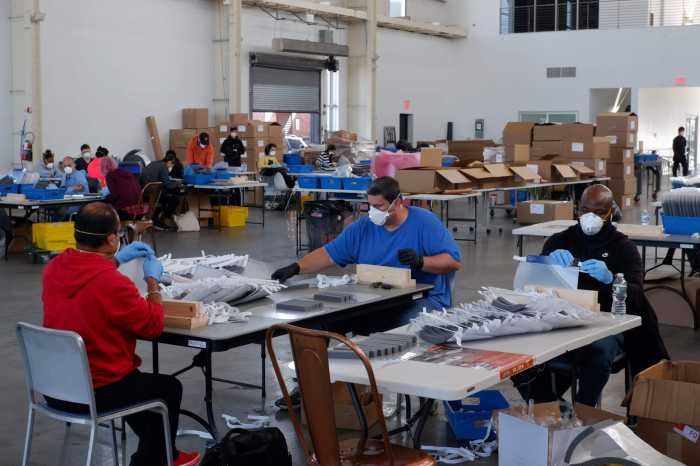Mayor Bill de Blasio on Wednesday unveiled more than 13 miles of additional open streets — including five miles in Brooklyn — as part of the city’s ongoing “Open Streets” program, a popular initiative which aims to give New Yorkers more open space outside during the hot months and as the city reopens from COVID-19-related restrictions.
“This is going to be great for people looking just for a break this summer, with all the things going on, a place to exercise, a place for the kids to run around,” de Blasio said at a press briefing on June 24.
The initiative, which de Blasio launched on May 1, will now have some 49 miles of roadway closed to cars at different times during the day and for varying durations, depending on whether they’re managed by the police, local business associations, or other local groups.
The city will also install an additional nine miles of temporary bike lanes as part of the initiative, adding to the existing nine miles of those paths — which are protected by markers, such as orange barrels — and bringing the combined tally for Wednesday’s announcement to about 23 miles of open streets and bike lanes.
While none of the new bike paths will be in Brooklyn, the borough got some 3.8 miles in a previous batch of open streets in May.
Many of the borough’s new open streets are slated for communities of color that have been disproportionately affected by the pandemic, including majority-Black areas like East New York, Brownsville and eastern Crown Heights, as well as Sunset Park, which has a large Hispanic population.
There are also some open streets in southern Brooklyn neighborhoods previously underserved by the street reconfigurations, such as an almost half-mile stretch on Bragg Street from Avenue V to Avenue Y in Sheepshead Bay.
Local police precincts will oversee most of the new open streets, but some will also be managed by local business and civic groups.
There are also a handful of streets adjacent to parks, including on Henry Street at the Red Hook Recreation Center and on N. Elliott Place along Commodore Barry Park in Fort Greene.
The initiative now totals some 67 miles of streets under the program — more than two thirds of the 100 miles Hizzoner committed to for the duration of the pandemic back in April.
With the higher temperatures, the city will also designate some open streets as “Cool Streets” on blocks shaded by trees. On those blocks, City Hall will work with the Department of Environmental Protection to expand its program of city-approved hydrant sprinkler caps.
De Blasio will unveil the first set of cool streets in the coming days, according to the mayor’s office.
A full list of the city’s open streets is available at the Department of Transportation’s website.

























